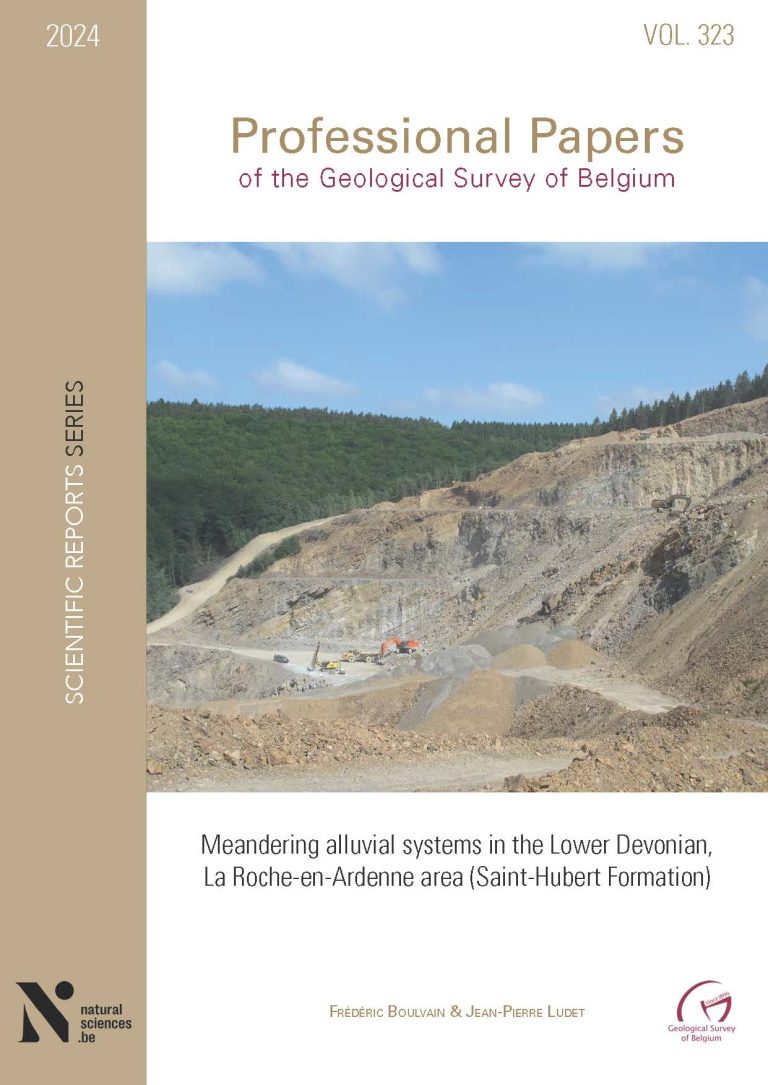
The Professional Papers of the GSB volume 323 is now available for sale at the GSB. For ordering, please contact gsb@naturalsciences.be
Publication details:
See attached the cover, abstract and table contents to have a first insight on the manuscript
The study focuses on the base and top of the Saint-Hubert Formation near La Roche-en-Ardenne, utilizing quarries and boreholes. The primary aim is to understand the nature of fluvial systems in the Ardenne region during the Lower Devonian. The predominant lithologies in the studied sections are medium- and fine-grained overbank deposits (60 %), representing levees and lowlands of the alluvial plain. Carbonate nodules and rhizomorphs are present, but no large crusts were observed. Coarser deposits (40 %) correspond to fluvial channels, with quartz-dominated sandstones indicating relatively high sediment maturity. Microfacies analysis reveals seven types, quartzites being less abundant than siltstones and quartzwackes, depicting a landscape characterized by low slope, large alluvial plains, and meandering smaller distributaries. The vegetation consisted of small plants adapted to a climate with alternating wet and dry seasons. The ideal short-scale deposition cycle involves channel sands grading into fine sands, mudshale with bioturbation and pedogenesis, and topped by siltstones with channelized crevasse splays.
On a larger scale, there is evidence of long-term accommodation increase, leading to thickening upward cycles and a higher proportion of alluvial plain deposits. This trend aligns with the onset of a future marine transgression depositing marine facies in the Mirwart Formation. Overall, the study provides valuable insights into the Devonian alluvial systems, including sediment characteristics, depositional environments, and landscape evolution.